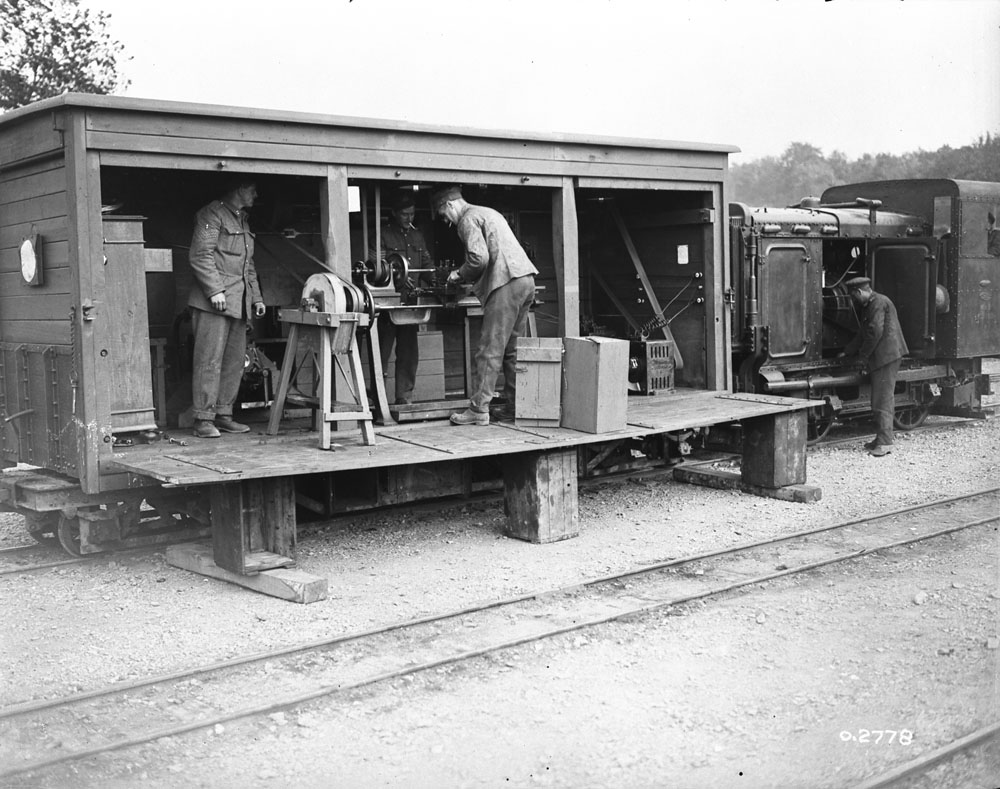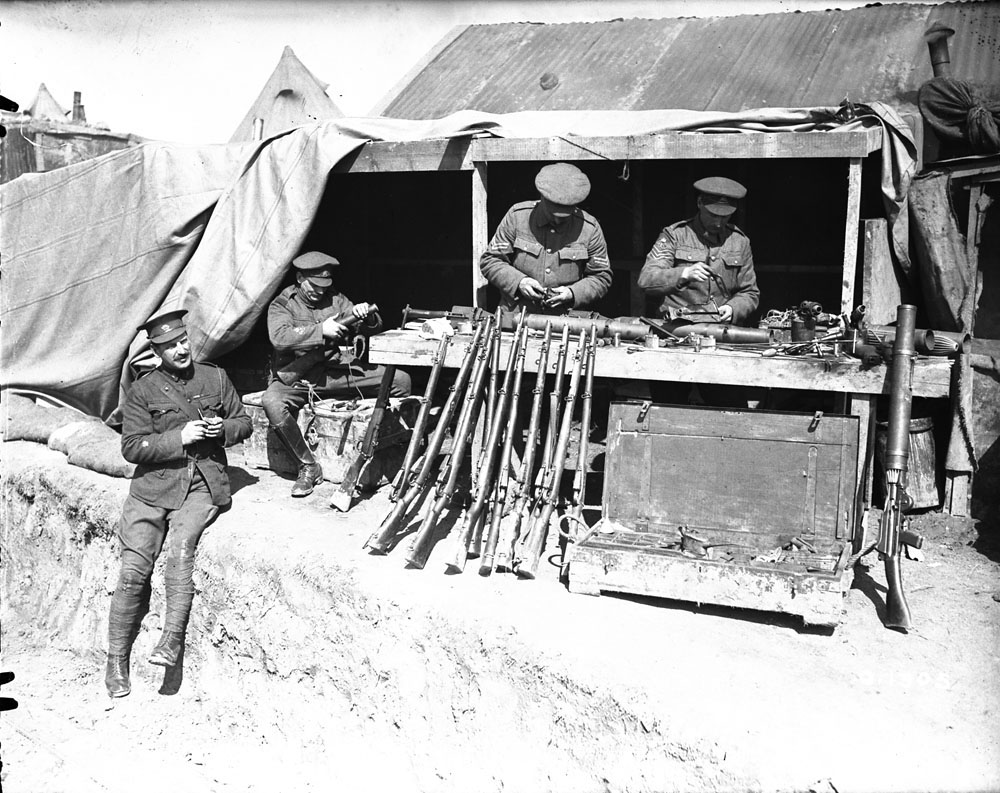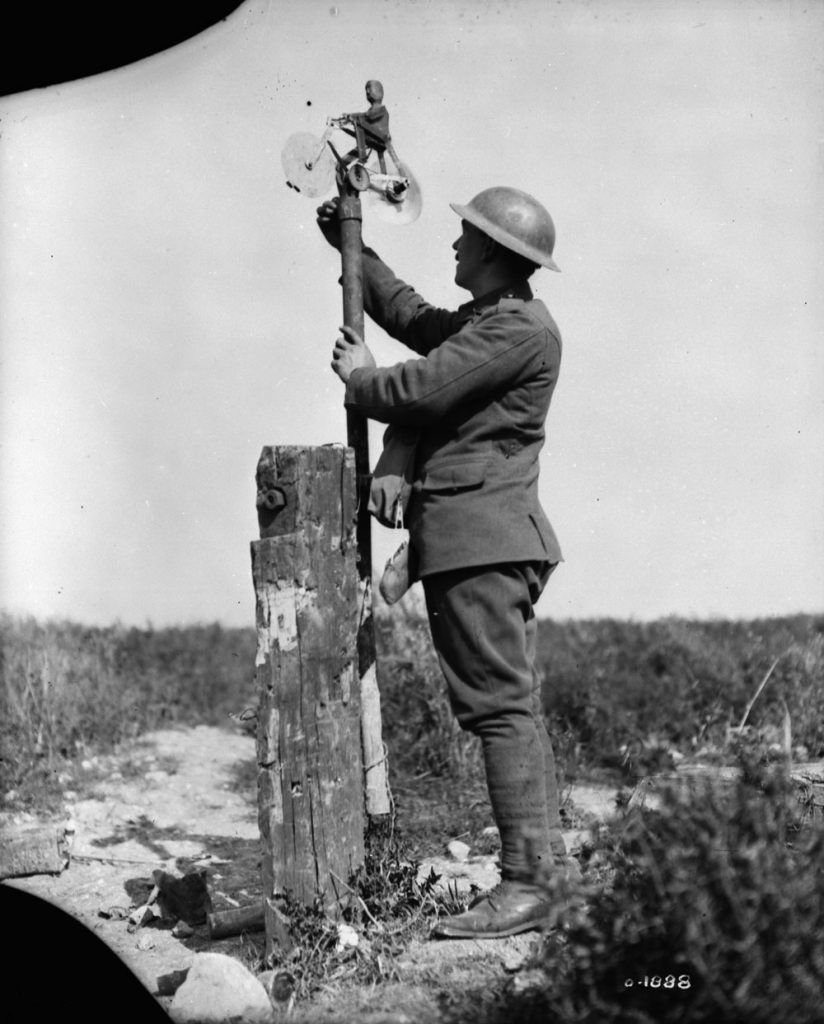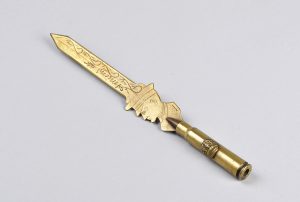Creativity and Innovation amidst Destruction and Chaos
Many have noted that war is filled with boredom punctuated by a few moments of sheer terror. For the civilian public, it might be comforting to think of the trench-warfare experience as populated by bored men writing letters to loved ones, singing songs together and entertaining themselves with mundane activities. This is likely a tempting view precisely because the alternative is something terrible to consider.
The experience of the soldier is made up of swift, threatening, troubling and debilitating experiences of the battlefield. It is also made up of long periods of inaction within the barracks. These long times of waiting created a need to distract oneself and to express more redeeming acts of human effort. In their spare time, many soldiers busied themselves by creating things. These items expressed innovation and lingered in the territories between art and craft.
Though some Canadian soldiers were creative right in the trenches amidst breaks in conflict, most practiced their creativity when they were back from the front lines. The army had mobile workshops with tools for repairing equipment in their camps. In them, many soldiers found time and tools to make handmade items. It also acted as a place to store them.
The raw materials for making objects would be all around them. They were found in the ruins of cities and towns or in the spent ammunition created during conflicts. Many Canadian soldiers who served in the First World War came from rural Canada. This meant that they knew how to improvise equipment by using whatever was at hand to get the job done.
This “make-do” craftiness was seen in the artifacts from world events such as the Klondike gold rush. Then, whatever was carried into the Yukon had to be used or fashioned into what was needed. Following the model of the Yukon, there are examples of Canadian soldiers in the First World War making their own explosive devices and tools such as mirrors to see over the parapet. “Trench clubs” were another handmade weapon used by the British in the trenches that were also likely made and used by Canadians.
Poison gas was a terrifying and lethal weapon first used by the Germans on Canadian and Allied troops in 1915. During the First World War, there was an image taken that shows a gas warning device. Despite the seriousness of its function, this device portrays a whimsical image of a bicycle-riding soldier. And, at the same time, this wooden sculpture was designed to depict the direction of the wind and, thus, the possibility of a gas attack from the enemy. It is not known whether the soldier or his creation depicted in this picture survived the War. Regardless, the image indicates the inherent danger of his circumstance. It is also proof that creativity and humor existed in the trenches of the First World War.
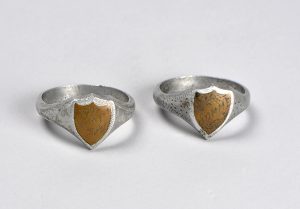
Napkin Rings, Souvenirs of the Battles of Somme and Vimy, aluminum, copper, Left: 3.2 x 5.3 x 5.6 cm; Right: 3.2 x 5.9 x 5.6 cm, First World War.
The innovation of these soldiers extended beyond the needs of the battlefield. It also fostered objects from home that represented the soldiers’ former civilian life. Soldiers made objects like napkin rings , buttonhooks, and letter openers or paper knives.
These types of innovative creations contradicted the atmosphere of warfare. Though soldiers often endured life in a filthy, rat-infested trench, these types of objects suggested a different time and place. They suggested a life of peace, refinement and civility. In this way, the making of these types of objects aided soldiers’ psychological well-being. On one level, they evoked memories of home and civilian life which the creative process of these objects evoked. On another level, these letter openers and napkin rings helped the soldiers to imagine a future, post-war, and a peaceful and civilized life. Both the memory and the imagination they evoked helped separate soldiers from their daily experience of war.
To civilians, however, there can be an uncomfortable quality about many of these objects. Bullets and cartridge cases do not easily meld into a peaceful or civilian life because they are so closely connected to killing. If one is not habituated to the use and presence of ammunition, these items could trouble ones sense of them. Because of this fact, the places that most often continue to use or display trench art are military messes, armouries, legions or military museums.
Regardless of this impact, these handmade objects symbolize the human nature, experience and ultimate aspirations of soldiers. Through the creativity and innovation of these objects, we can see soldiers escaped the boredom of the trenches and barracks and dealt with the ravages of battle.
If you would like to see more trench art and other Canadian war-related craft, click here.


